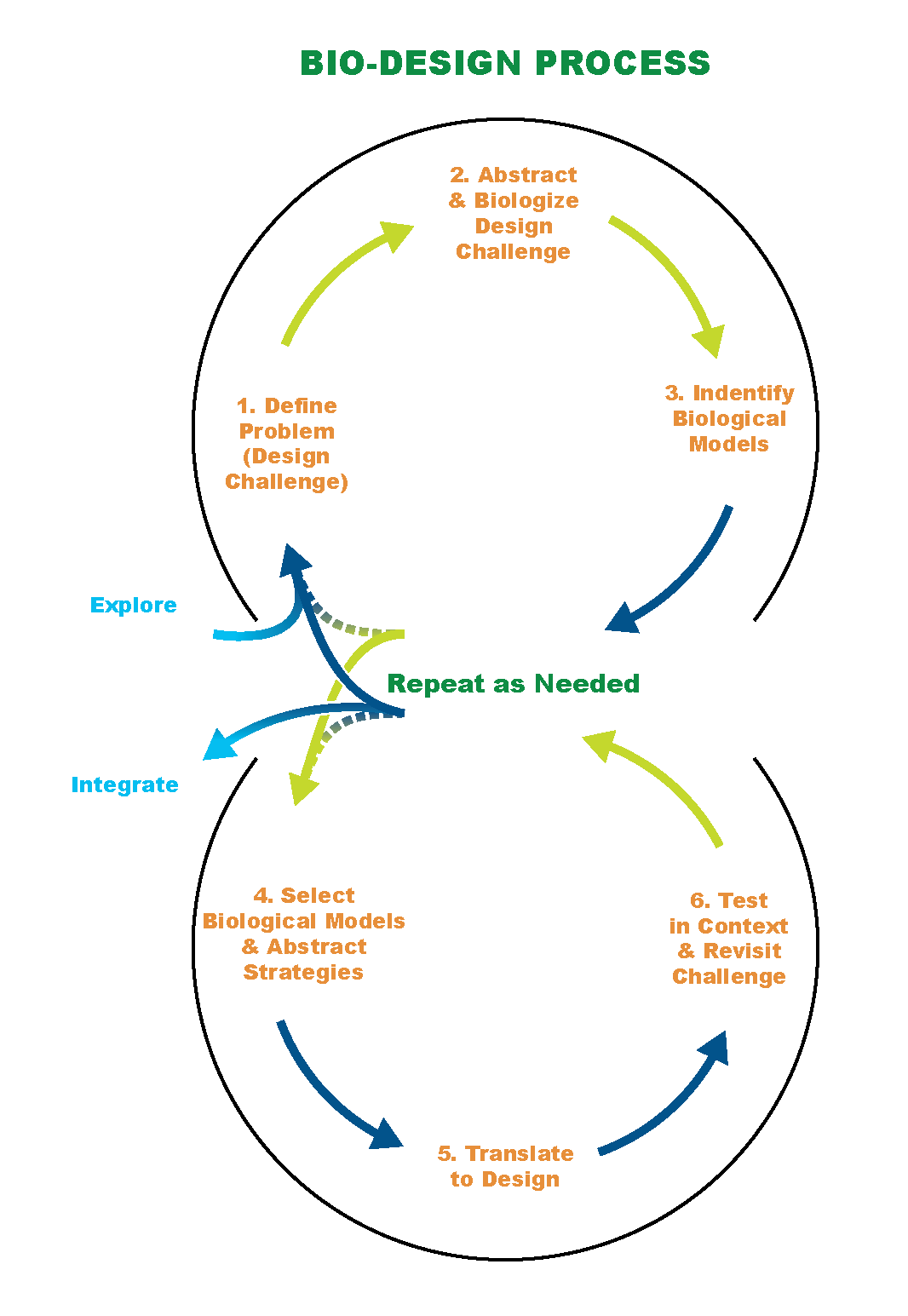“Deep inside, we still have a longing to be reconnected with the nature that shaped our imagination” - Janine Beyus, Biologist
What is Bio-Design?
This paper explores a collaboration between architecture and biology educators to integrate core concepts of biology with a bio-inspired architectural design process. Bio-inspired design looks to biology for inspiration to expand design thinking, methods, and strategies. Given today’s ever-increasing ecological challenges, designers can benefit from the expertise of biologists and the biological lessons of other species. In this paper, a six-step design process adapted from engineering (Fayemi et al. 2017) is integrated with core concepts of biology, including the ideas of function, biodiversity, and evolution. This integrated process explores how the concept of function serves as a bridge between human challenges and different areas of biology, while simultaneously helping to overcome the limits of simply copying biological traits. Tools are offered to explore biodiversity and the tree of life for biological models that can inform design ideas, stressing the importance of sampling different parts of the tree, as diverse organisms often solve a given problem in different ways. Bio-inspired design shifts the perception of architecture being an object toward exploring architecture as an action. This concept is described in this paper as “biologizing” (Baumeister et al. 2014; Brownell and Swackhamer 2015). The integration of the biological concepts with the adapted six-step design process is illustrated through an example conceptual design of a cold-climate, south-facing building envelope. The findings of the study illustrate biological and design lessons for educators and practitioners, as well as the next steps for bio-inspired design research and education.
References
Fayemi, P.E., Wanieck, K., Zollfrank, C., Manazana, N., and Aoussat, A. 2017. Biomimetics: Process, Tools, and Practice. Bioinspiration & Biomimetics, Volume 12, Number 1.
Baumeister, D., Tocke, R., Dwyer, J., Ritter, S., and Benyus, J. 2014. Biomimicry Resource Handbook. A Seed of Best Practices. Montana: Biomimicry Institute, 100-116.
Brownell, B. and Swackhamer, M. 2015. Hypernatural: Architecture's New Relationship with Nature. Princeton Architectural Press.
What does the Bio-Design process look like?
This paper investigates a design-research collaboration between evolutionary biology, curriculum instruction, and architectural design at the University of Minnesota to enhance and test a six-step bio-inspired design process integrated with core concepts of evolutionary biology. It brings evolutionary biologists’ expertise into the architectural design process to increase the range and depth of biological knowledge and to ground designers in accurate biological concepts and methods to translate into architectural design. Given today’s ever-increasing ecological challenges, designers can benefit from the expertise of biologists and the biological lessons of other species. A significant body of research has been developed on bio-inspired and biomimetic design processes encompassing diverse disciplines, such as robotics, product design, biology, and architecture (Fayemi et al. 2016, 2017; Graeff et al. 2019; Cruz et al. 2020; Dixit and Stefanska 2023). This research builds on the analogy-based approach to design with biological systems as a source of inspiration (e.g., Fu et al. 2014).
The research investigates:
1) Why and how core biological concepts (e.g., function, biodiversity, and evolution) can enhance a bio-inspired design process.
2) How a six-step design process could integrate with the core biological concepts.
3) How biological models can be abstracted and translated into architectural design. The paper discusses the process and outcomes of testing the integrated concepts with the six-step bio-inspired process for the conceptual design of a cold-climate south-facing building envelope.

References
Fayemi, P.E., Wanieck, K., Zollfrank, C., Manazana, N., and Aoussat, A. 2017. Biomimetics: Process, Tools, and Practice. Bioinspiration & Biomimetics, Volume 12, Number 1.
Fu, K., Moreno, D., Yang, M., and Wood, K.L. 2014. Bio-Inspired Design: An Overview Investigating Open Questions From the Broader Field of Design-by-Analogy. ASME. J. Mech. Des.136: 111102.